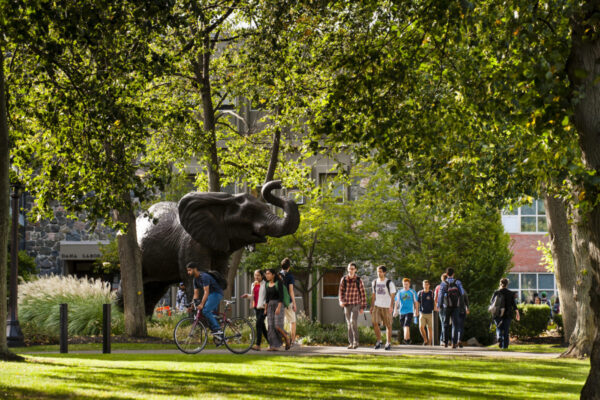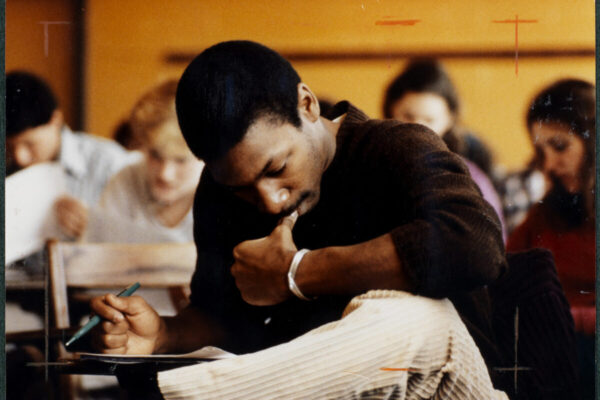By Adrianna Kezar and Daniel Scott
As college and university presidents face a plethora of challenges, the need to address contingent faculty roles and related work policies is growing in urgency.
The shift to non-tenure-track faculty models over the past four decades has been significant and well-documented. Yet some trailblazing campuses have made progress in redesigning faculty roles to address the problems associated with the current contingent model as well as in adjusting tenure-track faculty roles, and more and more campuses are taking up the task to better serve their missions and to ensure student success. The problems of the adjunct and tenure-track models have been detailed in earlier studies summarized on the Delphi Project website as well as in our report Adapting by Design.
The current two-tier system of faculty roles is broken. The adjunct faculty originally hired to accommodate new and expanding institutions and program types after World War II were practitioners in their fields seeking to teach classes based on their professional expertise, in supplement to permanent faculty. This was enriching for professional and vocational students and beneficial to already employed adjuncts who found other advantages in teaching alongside their day jobs.
Since then, the contingent faculty model has shifted in proportion and purpose. Seventy percent of current instructional faculty are non-tenure track, according to the National Center for Education Statistics. (Adjuncts are part-time faculty with no going appointment, while lecturers and instructors are full-time faculty who have annual appointments. Both contingent and without job security.)
Current non-tenure-track roles limit the ability of faculty to be excellent instructors that contribute to student learning and instead circumscribe a narrow focus on the delivery of educational content. Contingent faculty, particularly adjuncts, typically have limited or no professional development opportunities or procedures for constructive evaluation to assess effectiveness and create opportunities to improve instruction. These contingent faculty members often do not have the support or resources to access effective and innovative pedagogies, practices, and strategies (for example, integrating culturally sustaining content into curricula, using growth-mindset pedagogies, team teaching, and learning communities) that are increasingly called for amid growing evidence of their association with supporting student learning.
The traditional tenure-track faculty model also has some significant problems. The tenure-track model puts a disproportionate emphasis on research and publishing and renders teaching and other institutional missions like service, leadership, and civic engagement less important. Tenure-track roles not only downplay faculty’s role as educators and instructors, but also provide little incentive to be expert and skilled teachers. Tenure and promotion processes rarely emphasize excellent teaching. Most institutions and overall faculty disciplinary affiliations offer no incentives for improving teaching or being an excellent teacher. The enterprise of higher education is clearly in need of new faculty models.
New Faculty Model
As part of the Delphi Project on the Changing Faculty and Student Success, we surveyed a wide range of stakeholders (faculty, unions, disciplinary societies, federal and state policymakers, accreditors, administrators, deans, provosts, presidents, and board members) to determine what some key facets of the future faculty model could be. The results, published in The Professoriate Reconsidered, will help to guide institutions to redesign faculty roles.
The broad and representative range of stakeholder groups surveyed in The Professoriate Reconsidered are in consensus that current non-tenure-track faculty structures are unsustainable. In indicating their openness to particular approaches to redesigning faculty roles, those surveyed were in broad agreement on several key features of comprehensive and effective solutions. We have developed the emergent objects of consensus into a model for the future of the faculty.
The model centers on the scholarly educator. Scholarly indicates a professional role with robust involvement in one’s field through activities such as attending conferences and engaging in a range of forms of knowledge generation. Educator indicates the integral role of all faculty, including research faculty, in teaching students formally and informally. Student success is at the center of the model, encompassing a commitment to supporting students in areas directly and indirectly related to academics. Our study yielded several influences that should guide campuses in redesigning faculty roles:
1, Mission, goals, and values: Faculty roles and contracts must be better aligned with the various needs of our higher education system, which comprises a diversity of institutions with different missions. Stakeholders further agreed that roles should be customized in ways that are conducive to the satisfaction of specific institutional goals and involve greater flexibility to meet multiple, complex needs. With learning as the central goal of higher education, robust and well-thought-out instructor roles will remain a key aspect of institutional success.
2. Responsiveness to external factors: Higher education increasingly interacts and integrates with other domains such as the economy, government, and social institutions. Stakeholders agreed that faculty roles need to be defined in ways that incorporate key external factors, especially those that are related to student success and meeting the institutional mission.
3. Re-professionalization: The de-professionalization of non-tenure-track faculty roles is surprising in the context of the historically valued position of the professor. While higher education is concerned with stewarding knowledge in our society, the work of education and scholarship is allocated to non-tenure-track faculty. All stakeholders in higher education agree that a new faculty built around cornerstones such as professional development, participation in shared governance, equitable compensation, and academic freedom will contribute most to student success and institutional effectiveness.
4. Key values: The higher education enterprise is based on historical values that stand to be reiterated and deepened. Stakeholders felt that certain historic values (academic freedom, autonomy, commitment to public good), established by the American Association of University Professors at its founding, need to be incorporated into new faculty models. Stakeholders also indicated that new values, including collaboration, appreciation for diverse and customized faculty roles, and a greater commitment by faculty to their institutional mission and goals, need to be embraced. A key theme is collective responsibility.
Consensus Features for New Faculty Models
This model presents some shared principles that stakeholders agree should manifest across the higher education enterprise as we redesign the future faculty. New roles will vary at particular institutions, but some underlying characteristics for future faculty roles exist.
A Path Forward: Adapting by Design Toolkit
Campus leaders, particularly presidents, should convene conversations about new faculty models. The Delphi Project has created guides to assist campuses with these discussions called the Adapting by Design Toolkit. The toolkit provides campuses a comprehensive set of methods for the planning stages of the redesign, following a stepwise process with scaffolding and worksheets to aid faculty and administrative leadership in evaluating current conditions, future goals, and what it takes to bridge them.
Over the past 200 years, faculty roles have changed through multiple iterations. In that time, surprisingly little discussion has focused on intentional design of faculty roles to meet collective goals set by parents, students, policymakers, faculty, administrators, and other key stakeholders. With the growing visibility and increasing understanding of the misalignment between non-tenure-track faculty roles and the goals of higher education, universities have begun the process of transforming faculty work. The Delphi Project on the Changing Faculty and Student Success was established to provide resources and leadership on the issue, and we invite higher education leaders to leverage this work in their pursuit to craft solutions that recognize and respect the modern professoriate.
If you have any questions or comments about this blog post, please contact us.



